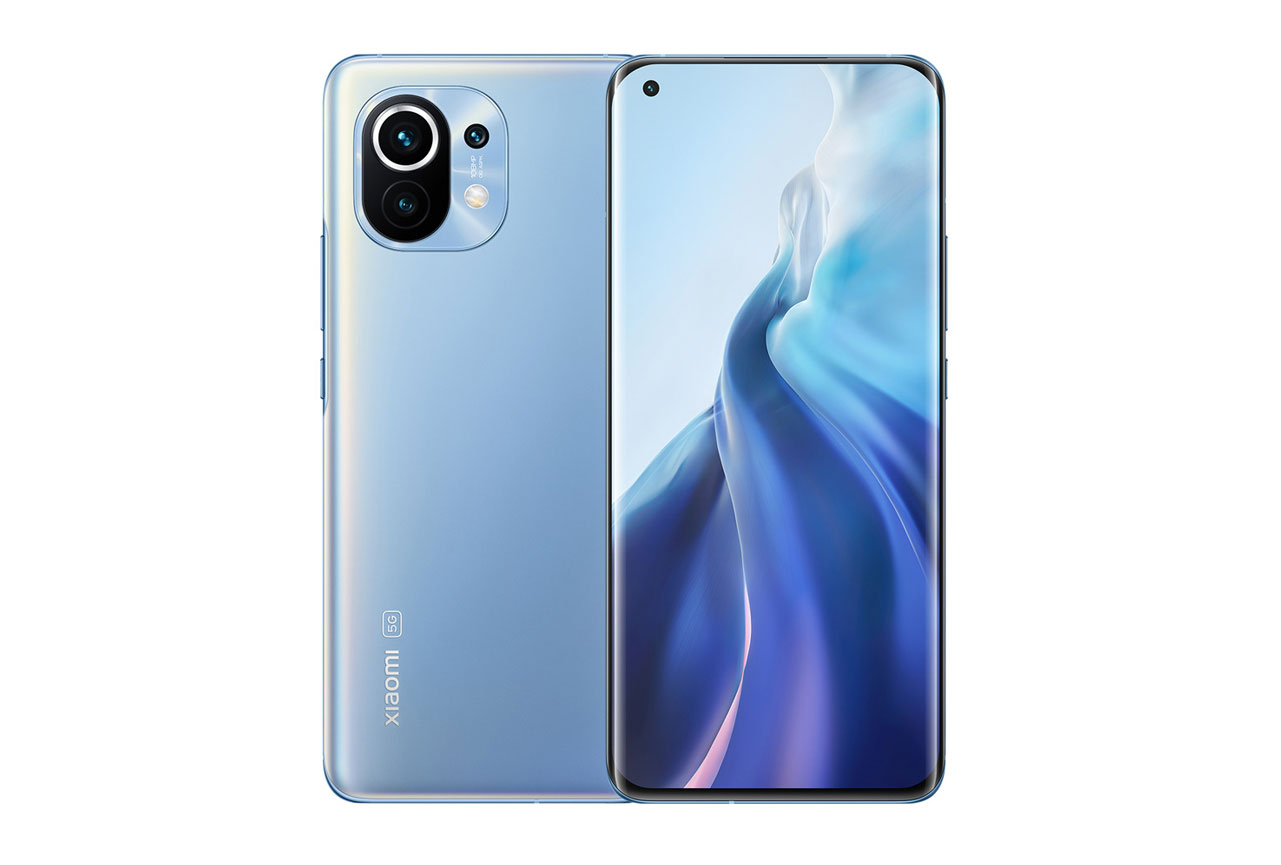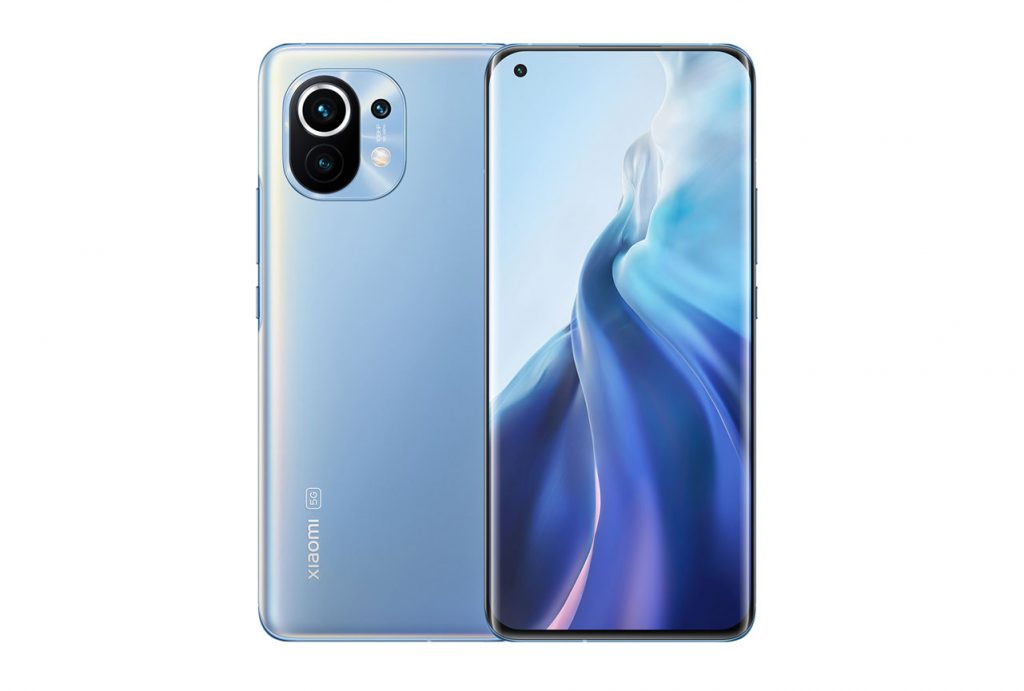Appearing in December 2020, the Xiaomi Mi 11 belongs to our Premium ($600-799) segment of smartphones, and comes with a QHD+ AMOLED display and a 108 MP main camera, among other features. Our engineers put the Xiaomi Mi 11 through our comprehensive Battery tests; here are the most important results.
Key specifications:
- Battery capacity: 4600 mAh
- 55W charger included
- Wireless charging (50W)
- 6.81-inch, 120 Hz max refresh rate, 1440 x 3200 resolution AMOLED display
- Qualcomm Snapdragon 888 5G (5 nm)
- Tested RAM / storage combination: 8 GB + 128 GB
About DXOMARK Battery tests: For scoring and analysis in our smartphone battery reviews, DXOMARK engineers perform a variety of objective tests over a week-long period both indoors and outdoors. This article highlights the most important results of our testing. (See our introductory and how we test articles for more details about our smartphone Battery protocol.)
Test summary
Scoring
Sub-scores and attributes included in the calculations of the global score.

Xiaomi Mi 11


Key performances
These key points are derived from the lab measurements during testing and do not figure into the overall score. The lab measurements, however, are used for the overall score.
 197th
197th
 40th
40th
Pros
- Very good charging performance
- Particularly impressive wireless charging
- Excellent adapter efficiency
Cons
- Poor autonomy (only 36 hours of moderate use)
- Very high consumption in every use case
- Poor night consumption management
Even with a relatively large battery capacity of 4600 mAh, Xiaomi Mi 11 achieves the worst overall score in our database up to now, due primarily to its poor performance for both Autonomy and (discharge) Efficiency, which its strong points simply could not mitigate.
The table below shows the battery capacity, charger, display type and resolution, and processor specifications for the Xiaomi Mi 11, along with a device in our Ultra-Premium segment ($800 and higher), the Oppo Find X3 Pro, as well as another Premium segment device, the Apple iPhone 12 mini:
|
Xiaomi Mi 11 |
Oppo Find X3 Pro |
Apple iPhone 12 mini |
|
| Battery (mAh) |
4600 |
4500 |
2227 |
| Charger (W) |
55W, wireless 50W |
65W, wireless 30W |
20W, wireless 12W |
| Display type, max refresh rate |
AMOLED, 120 Hz |
AMOLED, 120 Hz |
OLED, 60 Hz |
| Resolution |
1440 x 3200 |
1440 x 3216 |
1080 x 2340 |
| Processor |
Qualcomm Snapdragon 888 5G (5 nm) |
Qualcomm Snapdragon 888 5G (5 nm) |
A14 Bionic (5 nm) |
Autonomy (36)
How long a battery charge lasts depends not only on battery capacity, but also other aspects of the phone’s hardware and software. The DXOMARK Battery autonomy score is composed of three performance sub-scores: (1) Stationary, (2) On the go, and (3) Calibrated use cases. Each sub-score comprises the results of a comprehensive range of tests for measuring autonomy in all kinds of real-life scenarios.
With only 36.5 hours of autonomy of moderate use and less than a day of intensive use, the Xiaomi Mi 11 lands in last place in our Autonomy ranking to date. (With light use, however, the device can provide more than 2 days of autonomy.)

Stationary
Xiaomi Mi 11
34
104
A robot housed in a Faraday cage performs a set of touch-based user actions during what we call our “typical usage scenario” (TUS) — making calls, video streaming, etc. — 4 hours of active use over the course of a 16-hour period, plus 8 hours of “sleep.” The robot repeats this set of actions every day until the device runs out of power.
The Xiaomi Mi 11 lasts 40 hours in our Typical Usage Scenario, which compares with its two competitors in this review (46 hours for the Oppo Find X3 Pro and 43 hours for iPhone 12 mini). Further, the Mi 11 loses 3.5% of battery level per night, which is considerably higher than its competitors (1.5% for the Oppo and 2.5% for the iPhone).

On the go
Xiaomi Mi 11
48
96
Using a smartphone on the go takes a toll on autonomy because of extra “hidden” demands, such as the continuous signaling associated with cellphone network selection, for example. DXOMARK Battery experts take the phone outside and perform a precisely defined set of activities while following the same three-hour travel itinerary for each device.
With a score of 48, the Xiaomi device is just slightly behind its competitors (49 for the Oppo flagship and 51 for the iPhone 12 mini) in our on the go tests, particularly for making phone calls. It has slightly better autonomy than the Find X3 Pro when using the camera and social media apps.

Calibrated
Xiaomi Mi 11
49
100
For this series of tests, the smartphone returns to the Faraday cage and our robots repeatedly perform actions linked to one specific use case (such as gaming, video streaming, etc.) at a time. Starting from an 80% charge, all devices are tested until they have expended at least 5% of their battery power.
Back in the lab, the Xiaomi device has slightly better results than its competitors when video streaming (4G) and considerably better for music streaming (4G). However, it has particularly poor autonomy for video playback, which makes for a 49-point tie between the Mi 11 and the Find X3 Pro for this sub-attribute (with both ahead of the iPhone 12 mini).
Charging (84)
The DXOMARK Battery charging score is composed of two sub-scores, Full charge and Quick boost. Full charge tests assess the reliability of the battery power gauge; measure how long it takes to charge a battery from 0% to 80% capacity and from 80% to 100%; and measure how long and how much power the battery takes to go from an indicated 100% to an actual full charge. With the phone at different charge levels (20%, 40%, 60%, 80%), Quick boost tests measure the amount of charge the battery receives after being plugged in for 5 minutes.
One of the Xiaomi Mi 11’s strongest results in our suite of battery tests is for charging, where it takes on a nearly 80% charge when plugged in for 30 minutes. But more impressive is its wireless charging, where it achieves a full charge in only 1 hour 14 minutes and goes from 0 to 80% some 16 minutes quicker than the Oppo Find X3 Pro.

Full charge
Xiaomi Mi 11
95
121
Plugged in, the Mi 11 needs 48 minutes to show 100% on the battery level indicator and 8 more minutes to get its 4600 mAh battery completely charged. This performance is considerably better than the iPhone 12 Mini (1 hour 38 minutes), but not as good as the Oppo Find X3 Pro (37 minutes).

Quick boost
Xiaomi Mi 11
70
111
By plugging in the Xiaomi smartphone for 5 minutes at less than 70% battery level, users will be able to gain around 3 hours of autonomy (more than 45 minutes of active use). These are slightly better results than the iPhone 12 mini and rather a ways behind the Oppo Find X3 Pro.
| Xiaomi Mi 11 | Oppo Find X3 Pro | Apple iPhone 12 mini | ||
| Autonomy boost (hh:mm) | 20% | 2:52 | 5:49 | 2:43 |
| 40% | 3:09 | 6:36 | 2:31 | |
| 60% | 2:54 | 4:40 | 1:53 | |
| 80% | 1:51 | 3:25 | 1:20 | |
| Percentage boost | 20% | 11.2 % | 18.4 % | 9.5 % |
| 40% | 12.3 % | 20.9 % | 8.8 % | |
| 60% | 11.3 % | 14.7 % | 6.6 % | |
| 80% | 7.3 % | 10.8 % | 4.7 % | |
| Energy consumed | 20% | 2674 mWh | 4020 mWh | 1205 mWh |
| 40% | 2945 mWh | 4563 mWh | 1119 mWh | |
| 60% | 2709 mWh | 3223 mWh | 838 mWh | |
| 80% | 1735 mWh | 2360 mWh | 591 mWh |
Efficiency (46)
Our Efficiency score comprises two sub-scores, Charge up and Discharge. Charge up is the efficiency of a full charge (how much energy is drained from the wall outlet vs the energy capacity of the battery, as well as the efficiency of the charger and its residual consumption). Discharge is how much current the smartphone drains from the battery when in use (the ratio of battery capacity over autonomy). Better autonomy with a smaller battery means better efficiency.
Although the Xiaomi Mi 11’s Charge up efficiency is not bad, it is not enough to compensate for the high consumption in every use case in our Discharge efficiency testing, where it comes in at the very bottom of our database as of this writing (and drags down the overall Efficiency score with it).

Charge up
Xiaomi Mi 11
70
105
The Xiaomi Mi11 charges efficiently enough (75%) and has a very efficient adapter (89%). However, even though the adapter is more efficient than the competition’s, the entire charging system is less efficient than the Find x3 Pro’s (80%). In terms of consumption when the smartphone is already charged but still plugged into the outlet, the Mi 11 consumes way more than the iPhone 12 mini and just a bit less than the Oppo Find X3 Pro.

Discharge
Xiaomi Mi 11
46
121
The Mi 11’s very low score in this sub-attributes bespeaks very high consumption in all use cases, particularly in video playback, where its QHD+ display may be a factor.
Conclusion
The Xiaomi Mi 11 has some ultra-premium specs, such as its QHD+ AMOLED display. Problems with optimization result in very poor autonomy, however, meaning that users can rely on it to last only a day and a half with moderate use. But the device makes good use of an efficient 55W charger and has excellent 50W wireless charging as well.



DXOMARK encourages its readers to share comments on the articles. To read or post comments, Disqus cookies are required. Change your Cookies Preferences and read more about our Comment Policy.